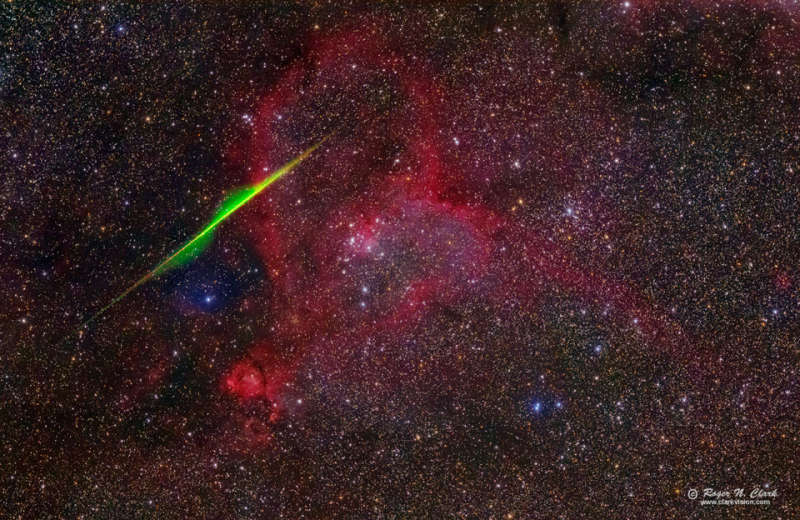
|
Credit & Copyright: Roger N. Clark
Explanation:
What is this meteor doing?
Dynamically, the unusually short and asymmetric
train may indicate that the sand-sized grain at the center
of the glow is momentarily spinning as
it ablates,
causing its path to be
slightly spiral.
Geographically, the meteor appears to be going through the
Heart Nebula, although really it is in
Earth's atmosphere and so is about one
quadrillion times closer.
Taken last month on the
night
of the peak,
this meteor is likely from the
Perseid meteor shower.
The Perseids radiant, in the constellation of Perseus,
is
off
the frame to the upper right,
toward the direction that the meteor streak is pointing.
The Heart Nebula
was imaged in 18 one-minute exposures,
of which the
unusual meteor streak appeared on just one.
The meteor train is
multicolored
as its glow emanates from different elements in the heated gas.
Transparent Science:
Browse 1,300+ codes in the Astrophysics Source Code Library
|
January February March April May June July August September October November December |
| ||||||||||||||||||||||||||||||||||||||||||||||||
NASA Web Site Statements, Warnings, and Disclaimers
NASA Official: Jay Norris. Specific rights apply.
A service of: LHEA at NASA / GSFC
& Michigan Tech. U.
Based on Astronomy Picture
Of the Day
Publications with keywords: Heart Nebula
Publications with words: Heart Nebula
See also:
